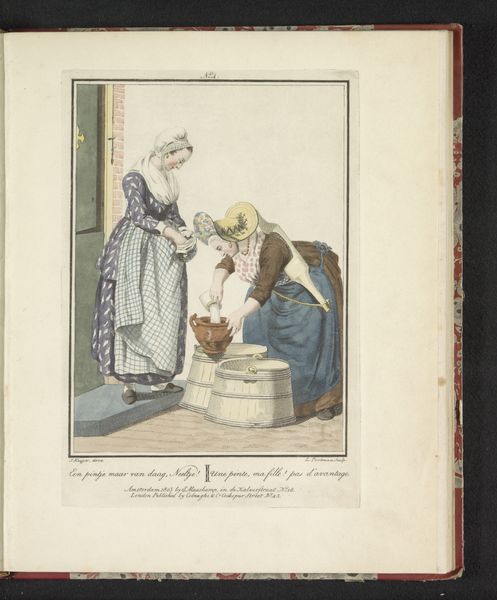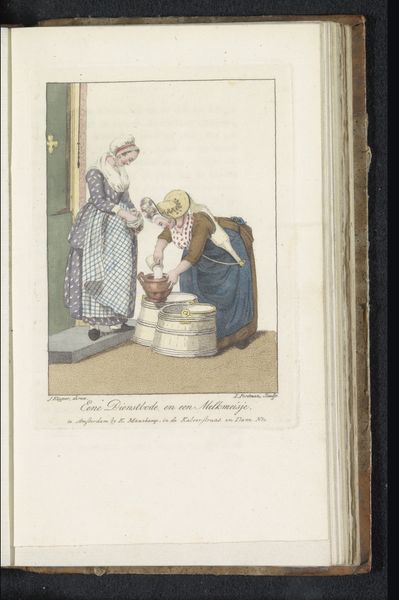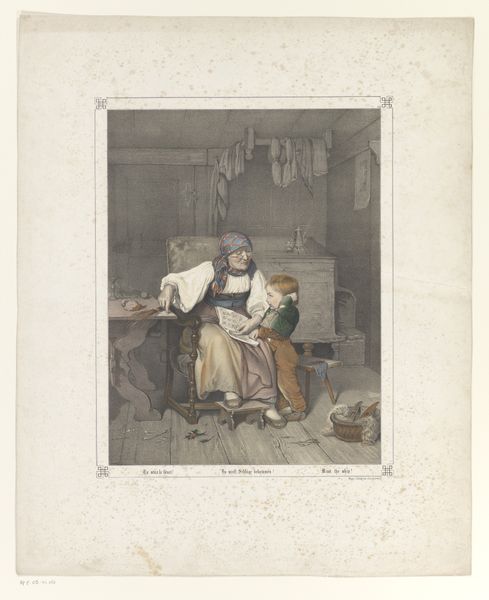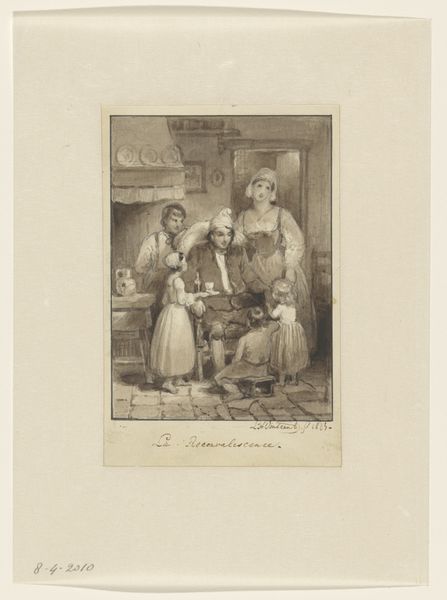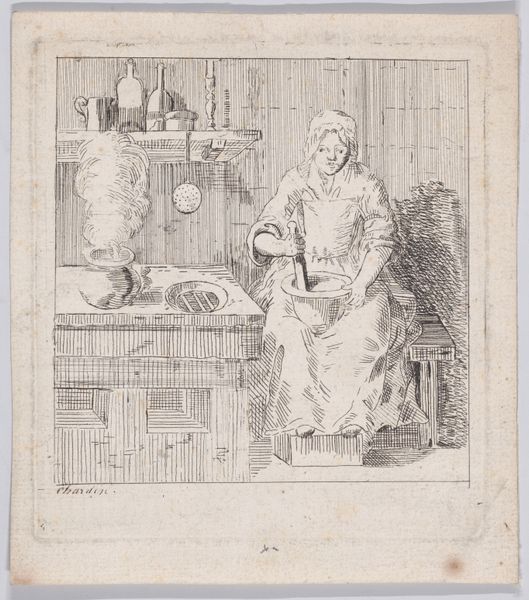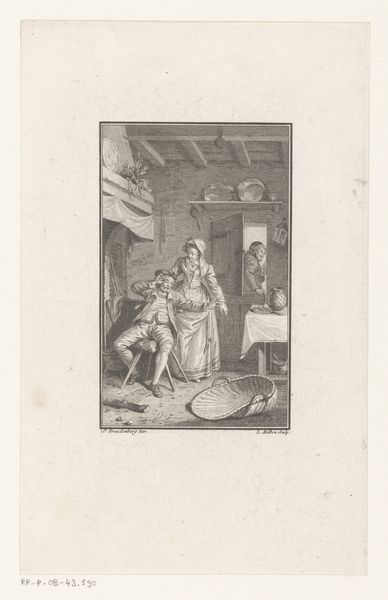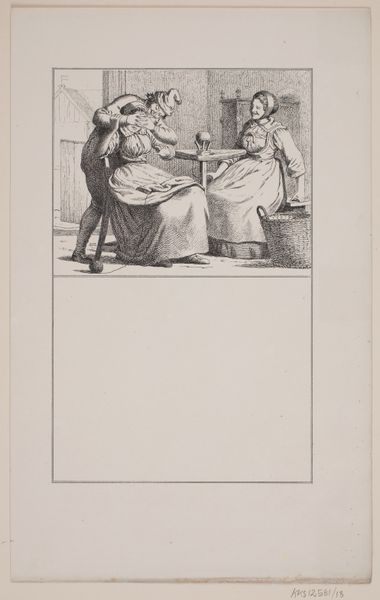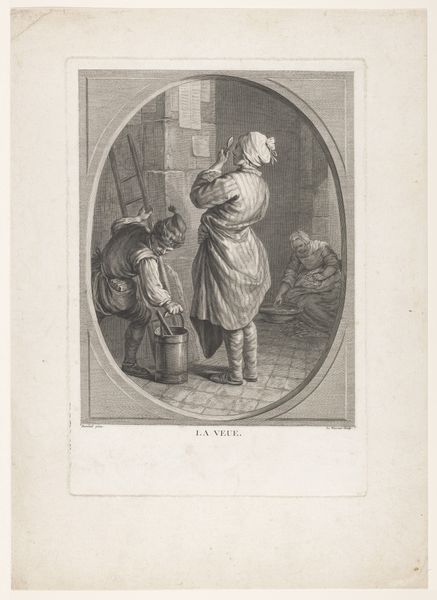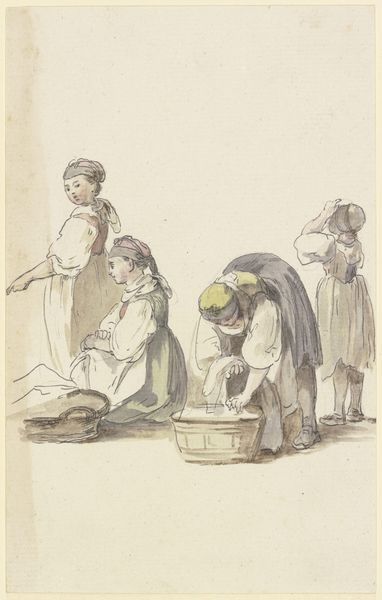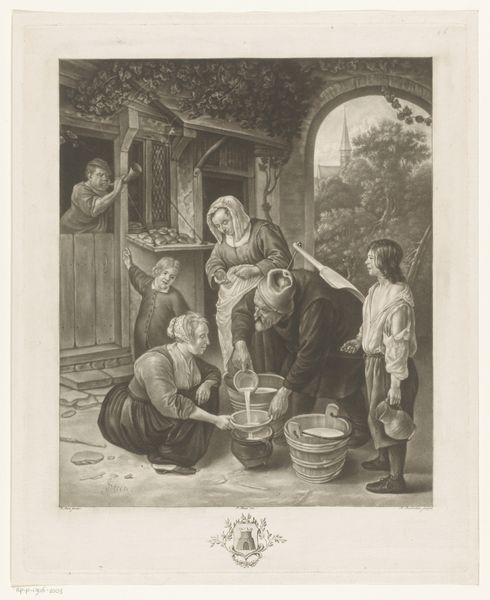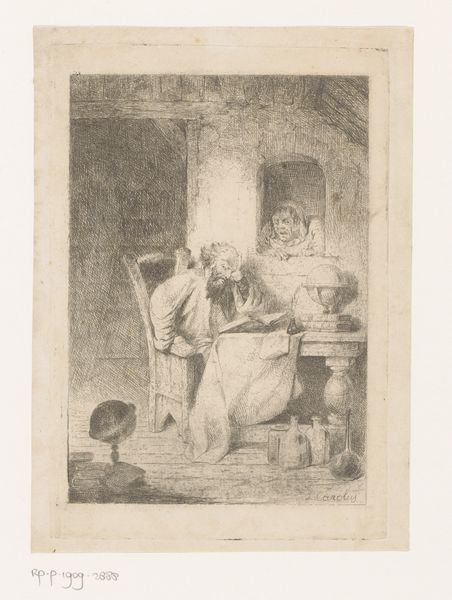
watercolor
#
portrait
#
dutch-golden-age
#
figuration
#
watercolor
#
watercolour illustration
#
genre-painting
Dimensions: height 279 mm, width 217 mm
Copyright: Rijks Museum: Open Domain
Curator: We’re looking at a watercolor by J. Enklaar entitled "Dienstmeisje en melkverkoopster," which translates to "Maidservant and Milk Seller", dating from after 1803. Editor: Immediately striking is the clear depiction of labor here, even down to the individual wooden staves forming the buckets. There’s something compelling about its raw, everyday quality. Curator: Precisely. Note how Enklaar meticulously renders the figures and their garments. The patterns, the folds, even the light reflecting on the ceramic milk pitcher. This attention draws our focus to the symbolic weight of genre painting during the Dutch Golden Age and how its conventions can elevate ordinary subject matter. Editor: Indeed. Considering Enklaar’s medium, watercolor, we can also explore the immediate materiality of production: from paper texture to pigment, each mark reveals something. Curator: Tell me more. Editor: The medium is quite telling, think of the physical labour that goes into milk production from farm to marketplace. Curator: Yes, each artistic gesture here reinforces the themes of labour. The contrast between the rough, coarse nature of wooden ware, and the refinement suggested by the ceramic jugs serves to visually reinforce those societal stratifications, doesn't it? Editor: Absolutely. These materials aren't passive. They actively communicate economic disparity while questioning art’s elitist reputation, I find it fascinating. Curator: Enklaar’s watercolor practice gives us a rare insight, it reminds us that seemingly timeless artworks often hide stories about societal hierarchies, consumerism and labour. Editor: Looking at it this way definitely provides more to this beautiful genre piece than its delicate hues let on.
Comments
No comments
Be the first to comment and join the conversation on the ultimate creative platform.
